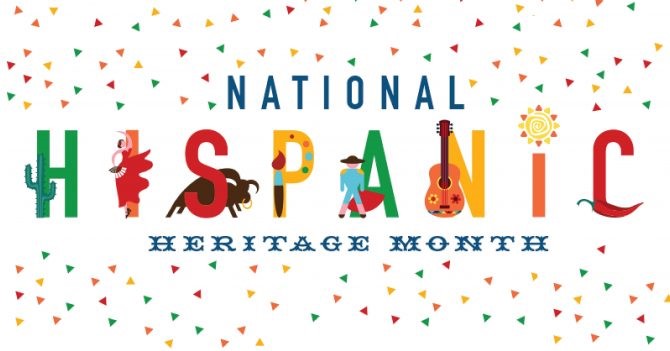Twenty years ago, Michelle Andrews was working as an administrative assistant.
But then she joined Federally Employed Women (FEW), which helps more than one million women become strategic leaders with its four-pillar program that begins with its national training program.
As a member of FEW, Andrews has served in leadership positions at the chapter, regional and national levels. From 2012-2016, she served as the organization’s national president, which required her to become CEO, CFO and COO for the multimillion-dollar organization.
Today, she has advanced her career as a national program manager of EEO and Diversity at the National Ocean Service.
“The information, knowledge, and skills that I have gained throughout my time with FEW has definitely impacted my career progression and personal growth,” said Andrews, who is serving as chair for this year’s National Training Program. “FEW provided me with unique opportunities that I would have never gained had I not been a member.”
FEW’s annual National Training Program is one of those unique opportunities that every federally employed woman should leverage to advance her own career. This year’s event, “Soaring to New Heights”, will be held July 26-30 at the luxurious Houston Marriott Marquis.
The National Training Program is FEW’s premiere training event that brings together presenters, speakers and attendees from across the country. The dynamic workshops align with the Executive Core Qualifications and fundamental competencies identified by the Office of Personnel Management. The objective is to help prepare FEW members with the tools needed to advance their careers back at their respective federal agencies.
Here are seven reasons why every federally employed woman should attend this year’s national event so they can soar in 2021:
Improve Job Performance
The training program’s attendees receive the necessary training to elevate their job performance. Training with FEW gives opportunities for a greater understanding of job responsibilities within their role, which builds their confidence.
Research from McKinsey & Company in partnership with Leanin.org underscores the challenge that women face when they want to earn a management position for the first time. For every 100 men promoted to manager, only 85 women were promoted—and this gap was even larger for Black women (58) and Latinas (71). Women remained in the minority when it comes to entry-level management positions as men held 62%.
FEW’s training provides its members with more resources and insight to break through and advance their career.
Improve Job Satisfaction
Training creates a supportive workplace. It shows your commitment to be better. Learning is the greatest return on your investment.
Higher job satisfaction will get you noticed in the federal ranks. According to a 2019 Federal Employee Viewpoint Survey, federal employees gave low marks when asked if they were satisfied with their organization (61%), their pay (63%) or their training (57%).
FEW’s training will improve your morale despite your current workplace culture and better equip you for the next career move.
Improve Productivity
More professional development will put you in the position to become more productive. Training with FEW provides hands-on experience and helps to increase efficiency in processes to ensure project success, which in turn will improve your performance.
Research links professional development with productivity. A study from the National Center on the Education Quality of the Workforce, for example, found that a 10% increase in workforce education leads to a 8.6% increase in productivity. The report compiled data from 3,100 U.S. employers.
In addition, organizations that offer training programs have 218% higher income per employee than companies without formal training, according to the Association Society for Training and Development. These companies also report a 24% higher profit margin.
More STEM Classes
For the first time, FEW has added a Science, Technology, Engineering and Mathematics component to its 2021 National Training Program. It was added to support a diversified workforce inclusive of women in cybersecurity, space and technology, engineering and biochemistry. Women consist 48% of the total workforce, according to the U.S. Census Bureau, but they only represent 26% of computer scientists and 12% of engineers.
According to the Bureau of Labor Statistics, the median annual wage for STEM occupations in 2019 was $86,989, compared to the median wage for non-STEM occupations at $38,160.
More Leadership Development
The National Training Program includes a two-day leadership course that will include four different topic areas: 1) Building relationships through collaboration, 2) Cultivating Motivation and Engagement, 3) Managing Change, and 4) Mentoring. One of this year’s workshops, The Human Dimension of Leadership, will provide proven strategies that will allow attendees to develop fellow team members more effectively, as well as resolve conflicts, foster teamwork and increase engagement and productivity. Whether you are transitioning into a higher leadership role or working your way into the executive ranks, the ability to get things done through other people is essential for success as a leader.
Better Team Building
One of this year’s most anticipated workshop, Building your Bench: Keys to Building a Leadership Pipeline, is designed to equip existing leaders with the tools necessary to select candidates for future leadership positions and help determine how to develop candidates to their maximum leadership potential. Top performing organizations and leaders understand that the ability to select, integrate and develop high level leaders is critical to their organization’s success.
Almost all surveyed employees and executives (97%) believe lack misalignment within a team impacts a project’s desired outcome. Communications is the glue that keeps teams together. Identifying and supporting the best team members will strengthen your leadership position.
More Influence
One of the most engaging and interactive workshops, The Power of Influence, will cover a compilation of strategies and techniques about organizational intelligence, team promotion, trust-building and leveraging your network. The ability to motivate and inspire others to take action is the distinguishing factor between a leader and a manager. The best leaders are those who can successfully influence up, down and across the organization, impacting business results by driving behavioral change.
To register for this year’s National Training Program, click here. If you have questions, please email us or call us between 9 a.m. and 6 p.m. at 800-609-9669.







